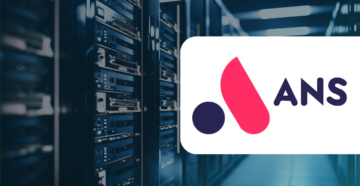Notes from the Field (CTO): July 2020 edition

In this series, I want to share with you my findings, experiences, tips, tricks, wonderings, ideas, and thoughts – those from colleagues, community peers and more – on everything Azure Virtual Desktop, Azure, Microsoft, EUC, and IT related. In other words, topics will differ.
First of all, let me start by mentioning and thanking my colleagues here at Nerdio. The whole team has been amazing during my first couple of weeks after joining. Patient, thoughtful, and good fun. I’ve worked for various companies in the past; small, big, in between, startups, and established companies, however, the speed at which we operate at Nerdio is something else, for sure. Not to mention the ambition and drive that comes with it. I love it!
Companies are looking for more effective and efficient ways to operationalize Azure Virtual Desktop.
Throughout the last couple of weeks, I have been talking to dozens of companies (and many more before joining Nerdio, of course). Obviously, one of the things that stands out is that Azure Virtual Desktop is in (very) high demand, I’m not telling you anything new. However, most organizations are looking for better and easier ways to setup, manage, and maintain AVD, which is actually one of the biggest challenges for most companies today.
There are two kinds of IT professionals.
When it comes to IT pros you roughly have two kinds; the tech savvy “I really like to dig in” kind of sysadmin, and the more all-round and laid-back (in a good way) “I don’t want to spend my free time getting to know (new) technology” kind of sysadmin.
Well, you know what I mean, right?
The latter doesn’t mind digging in a bit and to stay current in general but has no interest in going all in, all the time. He or she likes it when things are automated for them. They like to work with “to the point” graphical user interfaces – that being AVD or any other type of service/technology, like VDI in the past, for example. They’ll keep their certifications up to date, but won’t become an automation, PowerShell, or scripting guru anytime soon. It’s a job they love, it gives them fulfillment, but that’s it. And that is more than OK!
The tech savvy sysadmin likes to deep dive whenever he or she can. They’ll probably blog about it, help others on various forums and social media, contribute to community programs, and so on – work becomes hobby, or vice versa in many cases. It isn’t for everyone; far from it, even. And that’s OK, too.
From what I’ve seen, and I’m not just talking about the last couple of weeks, the ratio between these two groups (and I know, there are more in between) is around 80/20 if favor of the less tech savvy system administrator.
This comes with a challenge.
This also imposes a challenge for companies; those who are using AVD or are thinking about doing so, and those who do not.
Most companies will have a couple of tech savvy senior system administrators employed (here the 20% of the team rule applies as well). Up to a certain point they will be able to automate and streamline deployments, script image updates, use various kinds of DevOps methodologies, and so on. They will have it running as smooth as possible, they will handle all code, templates, updates, daily management tasks, you name it.
Great, right?
However, what happens when something breaks and they are not available for some reason? Maybe they have some time off and are not reachable, they might become ill for a longer period of time, or even worse, what if they leave the company? The saying “putting all your eggs into one basket” comes to mind.
Will you educate and train other employees? And more importantly, do they want that responsibility? Doing your “job” because you are asked or told to is something completely different than when it’s born from passion, as part of your day job, if that makes sense.
What about hiring in the expertise? Sure, but they won’t know your company the way you or your former employee(s) did, they are often much more expensive, and eventually, they will leave as well. A vicious circle.
Managing IT resources, AVD or otherwise should not require “special” skills or take a longer period to learn, and I think most companies will agree (80/20 again?). If anything, it should reduce your time to market and help make you (more) money.
The goal should be to relieve certain individuals from unneeded stressful situations, spread the workload evenly across your team, do more with less, and save hours per weeks on common day-to-day management tasks, creating room for other types (more interesting, fun, or important) of tasks. Preferably, by taking advantage of cutting-edge technology supercharging your AVD deployment. Does that sound appealing? Of course it does.
Sometimes it only takes a small investment before you will be able to reap the benefits in the weeks, months, and years after–tenfold.
Operationalize AVD more efficiently.
Nerdio provides features and functionalities not found in the Azure ARM portal, including a more user-friendly way regarding AVD setup and ongoing day to day tasks. We support hundreds of companies world-wide to make use of AVD more effectively and efficiently, saving a ton on costs. From a technical (image management, autoscaling, migration, auto-deployments, configs, and more) and operational point of view.
Just think about it, wouldn’t you like to enable 80% or more of your technical staff to be able to setup and manage AVD within hours?
No steep learning curve, no single point of failure from a knowledge perspective, like “but what happens if he or she leaves the company?”, less pressure on the team as a whole; they are all able to stand in for each other, and the list goes on.
Features in Nerdio Manager for Enterprise, when compared to the native Azure portal will be much more straightforward to work with and more intuitive, without needing to have any knowledge of the underlying Azure platform–no PowerShell, ARM/JSON, or any other form of scripting. Though, if that’s something you would like to use, or continue using next to, or on top of Nerdio Manager for Enterprise be our guest. We support it all.
But don’t take my word for it, give us a spin and you’ll see. Make sure to have a look at the Azure portal as well, to make a fair comparison.
CLICK HERE TO TRY NERDIO MANAGER FOR ENTERPRISE FREE FOR 30 DAYS.
The other great thing about Nerdio Manager for ENTERPRISE is that we offer day one support for just about anything you can think of form a AVD management perspective—we even take it one or multiple steps further. Is Microsoft about to release some form of PowerShell script, or multiple? We have it build in and fully automated for you from the day it hits GA, and that’s just one example.
Teamwork makes the dream work.
Even though Microsoft is doing an excellent job in constantly updating the AVD core services and the accompanying Azure portal, it’s still far from what most companies (sysadmins) are/were used to from a management perspective when compared to traditional VDI type deployments – and it probably won’t come close anytime soon, if at all. Which makes perfect sense; it’s a completely different approach and model.
And don’t get me wrong, the work that Microsoft is doing and the speed at which they operate and innovate is amazing and inspiring, to say the least. In fact, if it weren’t for their great work, we at Nerdio wouldn’t be able to do what we do on a daily basis. The partnership is valuable, to us, and to Microsoft as well. We are extremely happy with all the support we are getting from the various internal teams.
Microsoft continues to focus on core AVD technologies like building out their central management plane within all regions globally, the ARM based model, MSIX AppAttach, Windows 10 Entp. Multi-Session, and much more, while also slowly enhancing the management capabilities within the Azure ARM portal.
At the same time, Nerdio will keep focusing on adding additional value on top of AVD, while getting rid of the feature gap, which holds back a lot of companies from using AVD to begin with. It’s what drives us.
If you have any questions, make sure to reach out! Thank you for reading.


